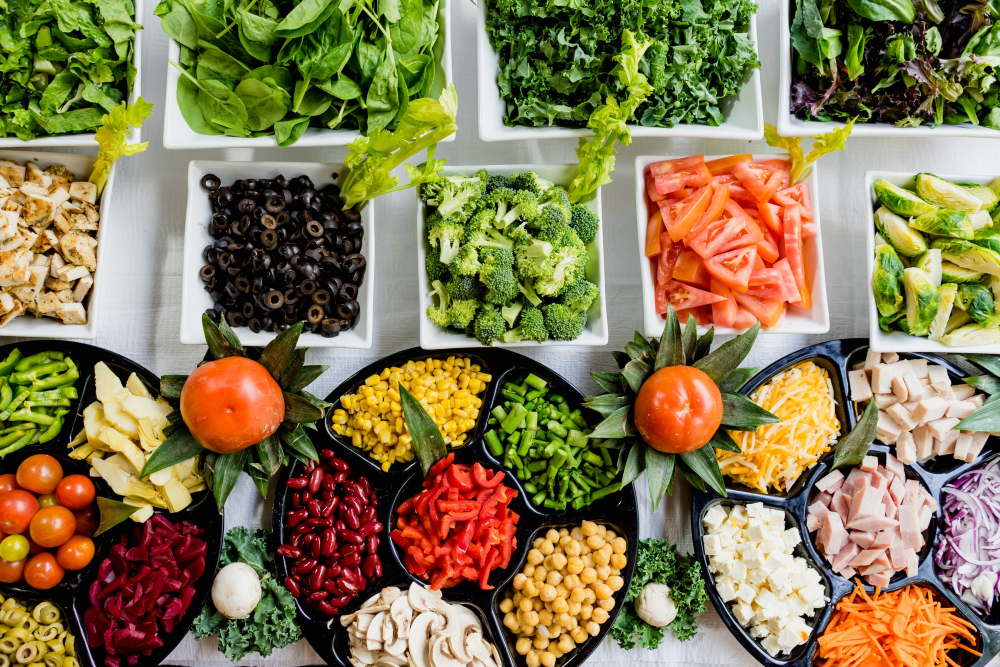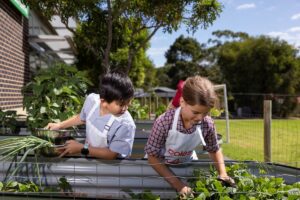What do we mean by unhealthy foods?
Unhealthy foods are foods or drinks that tend to be low in the nutrients kids need to grow and develop and do not fit into the five food groups (vegetables, fruit, whole grains, milk foods and meats and alternatives).
There are lots of different names for unhealthy foods, e.g. extras, sometimes foods, junk foods, discretionary choices.
Unhealthy foods include cakes, muffins, sweet biscuits, savoury crackers, processed meats, chocolates, lollies, ice cream, sweet and savoury pastries, sugary drinks, muesli bars, cream, butter, sweet spreads and takeaway foods.
These foods are often high in saturated fat, added sugars and salt (or alcohol), and low in fibre and high in energy.
Unhealthy foods are still important for enjoyment and celebrating special occasions, but we can cut back the amount, to “only sometimes and in small amounts”.
How does the intake of Australian kids measure up?
The recommendations for unhealthy foods in the Australian Dietary Guidelines can be confusing as they change based on age, gender and activity levels. The serving sizes are also different for each type of unhealthy food. One serving of unhealthy food is the amount that contains 600kJ of energy (~145 calories).
For children under 8 years the maximum recommended serves of unhealthy foods is ½ serve, so 300kJ which is equivalent to:
• 6 hot chips, or
• 3 lollies, or
• ½ a small muffin.
We know from national surveys that kids are currently eating up to 8 times this amount.
For example, a child’s day might include:
7am: bowl of choc puffed cereal for breakfast
11am: a muesli bar and packet of flavoured crackers in the lunchbox
330pm: a small muffin at the shops on the way home from school
630pm: a sausage for dinner
Then without even realising, they have eaten 4 to 4 ½ serves of unhealthy foods in the one day.
Eating too many unhealthy foods can mean kids are missing out on getting enough of the Five Food Groups. National surveys have found only around 5% of Aussie kids are meeting the vegetable recommendations.
With the availability of huge servings of unhealthy foods in the shops we are all suffering from portion distortion.
We are generally eating unhealthy foods:
- every day, and often multiple times a day
- eating much bigger portions than the recommended serves
- That’s why the dietary guidelines recommend only including these foods sometimes and in small amounts. So, we can shrink our portions or not have these foods every day.
To find out more about unhealthy foods and the dietary guidelines visit eatforhealth.gov.au
Tips for how families can make small changes to reduce unhealthy foods

There are lots of things that can make it hard to cut down on unhealthy foods; things like kids asking for these foods, advertising and promotion of these foods, other kids having them in the lunchbox and the social norms where it is now normal to have these foods every day, even though the dietary guidelines recommend to only have sometimes and in small amounts.
If we can limit how many unhealthy foods come into the home this might help to make it easier to provide healthier alternatives from the five food groups.
If unhealthy foods are not in the fridge or pantry it’s harder for children to see and ask for these foods.
Try these tips:
- limit the number of days in a week unhealthy foods are offered, or
- swap every second time unhealthy foods are usually offered with foods from the five food groups.
- make a plan before you go to the supermarket, such as:
writing a shopping list and sticking to it,
avoiding the snack aisle,
buying smaller portions of unhealthy foods, or
cutting down how often you buy unhealthy foods. - talk about cutting down on unhealthy foods with co-parents, relatives and friends to help get them on board too.
- keep lunchboxes and snacks simple – think less packaged foods such as grainy sandwich, veggie sticks, fruit and yoghurt.
Caring Futures Research:
In a recent study by University of South Australia and Flinders University we surveyed nearly 500 parents of 3 to 7 year olds across Australia to find out about their motivation towards reducing how much unhealthy foods kids eat. We found that confidence, intention and planning were the most important parts of motivation for reducing unhealthy foods provided to children.
• Confidence relates to believing you can change foods provided to children.
• Intention is actually aiming or planning to reduce provision – so having a goal.
• Planning is having the strategies or practical ‘how to’ go about reducing unhealthy foods.
So, this means that when parents reported being confident to limit unhealthy foods, their children ate less unhealthy foods.
To help boost confidence parents need to believe that they can make changes and remember they are in control. Repeating in your head that you can reduce how much unhealthy foods kids eat and practising this can help. You can also take to relatives and friends to get them on board too.
At the Caring Futures Institute at Flinders University we are continuing to research ways to better support families and caregivers to reduce children’s unhealthy food intake and increase foods from the Five Food Groups. We are doing a number of projects with families, long day care and schools.
To find out more about how you can get involved visit the participate in research studies page of the Flinders University website:
Brittany Johnson, BNutr&Diet, BHSc (Hons)
Brittany is a postdoctoral research associate in the Caring Futures Institute at Flinders University. Her research is focused on supporting families to improve children’s diet quality by reducing unhealthy food intake and creating supportive environments where we live, work and play. Brittany is an Accredited Practising Dietitian with a background in public health nutrition and experience in working with Aboriginal communities and the long day childcare sector to make healthy food choices.






